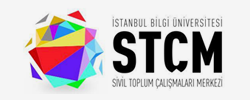Author: Egle Kryzanauskaite
Since the beginning of this year, a lot has changed and many of us found ourselves in a new reality. The global pandemic has caused drastic change in our daily experiences and brought a number of challenges for international mobility programs including the Civil Society Exchange. This new “normal” led us to rethink what mobility actually is and how it can be facilitated through technology when physical mobility is not an option. There is no doubt that times like this are particularly important for civil society organizations to build solidarity across borders and strengthen existing networks. Therefore, we are dedicated to reimagine the Civil Society Exchange program where all participating organizations can benefit from getting together and learn from each other through a hybrid online/offline program.
The term “Virtual Mobility”, when repeated a couple of times, leaves a little aftertaste of science fiction. Even though most of us like going to different countries, either for educational or recreation purposes, how many of us would like to do it by means of virtual reality? Not me! However, in recent years, this from a first bite slightly futuristic and fictitious concept of virtual mobility together with “online intercultural exchange”, “virtual exchange”, “collaborative online international learning” are emerging as part of internationalisation at home. There is no doubt that with a current situation of traveling restrictions the need to rethink our ways of designing, working with and going for mobility will only grow. Would you like a home delivery of intercultural experience? Sounds too good to be true, doesn’t it?
This article is an imaginary label of virtual mobility. First, we will list the main ingredients and discuss the country of origin. After that, a concise yet practical instruction of use will be described. Of course, it is not made for everyone’s taste – some may find it too bitter. However, if used wisely and creatively, virtual mobility can serve as a great new addition to or, in some cases, as a substitute for conventional ways of enjoying mobility goods.
INGREDIENTS
Virtual mobility became a more widely used term in everyday’s language in the early 2000’s. Back in those days the Erasmus student exchange program in the EU was getting increasingly popular, however, not everyone was able to participate due to financial, social or other reasons. The benefits of internationalization were rather obvious and everyone wanted to pluck those ripe fruits – this is where the virtual mobility concept got a moment of fame by offering a complement or alternative to traditional ‘real’ mobility programs [1]. By all means, virtual mobility has mostly to do with academic learning and is defined as “a form of academic mobility in which students and teachers in higher education can study or teach by using digital tools and platforms without physically traveling to another higher education institution abroad” [2]. Or, more officially, “it is a set of activities supported by Information and Communication Technologies (ICT), including e-learning, that realize or facilitate international, collaborative experiences in a context of teaching, training or learning.” [3]. From these broad but rather clear definitions it is easy to extract main ingredients of virtual mobility: no or little physical mobility in terms of traveling to another country, a wide usage of ICT tools, and, surprise surprise, collaborative experiences! Researchers argue that it can be a partial or even full replacement for a conventional physical mobility that we are all so used to. But can it, really? To answer this question, we need to take a better look at what comes in this virtual package.
Virtual mobility is implemented in a ICT supported learning environment and, most often, serves as an addition to physical mobility (before, during and after). In this way, a hybrid program of physical and virtual mobility is designed. Both words – virtual and mobility – have an equal weight, therefore all ICT means are used in order to foster intercultural learning and experiences, and at the same time to sharpen the 21st century skills of digital literacy. Virtual activities can take on various virtual elements to include cooperations, exchanges, classrooms, seminars, demonstration centers, collaboration centers, communities, learning platforms, internships, and workplaces adapted to labor market needs. Basically, everything you knew about learning is now accessible within reach – just click several times and sit comfortably in front of the screen.
INSTRUCTIONS
The virtual part of it seems pretty self explanatory – things that normally take place physically now are moved to an online world. But how? Traditional physical face-to-face methods are replaced or complemented with virtual seminars, simulations, even gaming formats [4]. People get a chance to take part in numerous interactive open courses, online facilitated dialogues, or debate exchanges in real time. A great collaboration between software engineers and the Internet made the virtual mobility be in reach for everyone – there are numerous platforms and applications that offer a range of possibilities starting from a simple conference calls, live streaming, online classrooms, and going as far as having a real-time collaborations, etc. [5]
Alright, it seems that the virtual part is easy to accomplish and is not a bolt from the blue in the 21st century. But what about intercultural learning? Deliberately, students who participate in a virtual mobility program are provided with an opportunity to learn from foreign teachers or fellow students, they get an access to a foreign study base, interact, possibly, in a foreign language, and work together with others on a common project or topic without leaving their home country. The survey about Erasmus+ Virtual Exchange initiative in year 2018-2019, that gave an access to a virtual mobility for almost 19 000 participants, reports that 88% of them agreed that virtual exchange had a positive impact on their ability to work in a culturally diverse place and 91% described what they learned about people from other cultures as positive or very positive, of which 31% reported a clear change from their previously-held beliefs [6] . Of course, these numbers are hard to interpret, however the report includes excerpts from individual stories of students, facilitators, youth workers and teachers that indeed support such bold claims – people leave positive reviews. And people love recommendations, don’t we?
REVIEWS
Let’s agree that it does sound good. The question is, how widely it can be used outside the study exchange field? What about the non-governmental sector that is even more related to intercultural learning experience and building cross-border and cross-culture connections? Surprisingly, even before those times of pandemic, much has been done by using the secret ingredient of virtual mobility. In the previous edition of the Civil Society Exchange program, some of the participants have successfully integrated virtual mobility aspects into their learning experience. Polis180 in Berlin and Istanbul-based Yereliz worked jointly to improve the advocacy and lobbying skills of both organizations and took advantage of virtual mobility elements in their partnership. This year we expect more Civil Society Exchange participants to focus on virtual mobility solutions for capacity development due to global pandemic.
FINAL WORD
You are probably reading this while sitting in front of your screen at home. Many things can be done these days without leaving a room, and that includes creating collaborations and intercultural partnerships so as to raise organizational capacity and, eventually, strengthen the civil society. This all may sound way too good to be true, especially in times of the global pandemic, but with a little spice of virtual mobility the intercultural learning can be on your plate. Here is our two cents about it:
Virtual mobility is especially beneficial if:
– one is not able to travel due to financial, political, societal or other reasons but still want to experience intercultural learning
– one seeks to minimise the ecological footprint that is created by excessive traveling
– one’s goal is wide scalability, borderless accessibility and educational potential to the broadest and most inclusive audience possible
Virtual mobility should always be supported with physical mobility when possible because:
– one is not able to fully immerse into a different culture and therefore cannot experience intercultural learning as we understand it
– spending too much time in front of the screen drains one’s energy and affects both physical and mental health
in a long-term, it may create additional virtual borders and that would be very much against everything that we believe in.
All in all, virtual mobility can serve as a great addition to a mobility program, however, as a supplement in one’s diet cannot replicate all of the nutrients and benefits of the whole foods. In respect to the current events, virtual mobility is a great way to deal with this crisis when one cannot travel and connect with people directly. However, this too shall pass – in the meantime, we can connect virtually and at the same time be more mindful and consider how to connect physically in a safer way.
1. Vriens, Mariet & Petegem, Wim & Op de Beeck, Ilse & Achten, Mart. (2010). Virtual mobility as an alternative or complement to physical mobility.
2. Buchem, I., Konert, J., Poce, A., Carlino, C., Tur, G., Ubachs, G. (2018). Open Virtual Mobility Brochure. Retrieved from https://www.openvirtualmobility.eu/topics/outputs
3. European Commission (2019). Erasmus+ Programm Guide. Retrieved from https://ec.europa.eu/ programmes/erasmus-plus/sites/erasmusplus2/files/erasmus-plus-programme-guide-2019_en_0. pdf
4. Read more about gamification elements: https://library.iated.org/view/BUCHEM2020MEA
5. An open and public co-created “Online meeting resources toolkit for facilitators” with much valuable information can be accessed here https://docs.google.com/document/d/1NyrEU7n6IUl5rgGiflx_dK8CrdoB2bwyyl9XG-H7iw8/edit#
6. The European Commission. (2019). Erasmus+ Virtual Exchange Intercultural Learning Experiences. 2018-2019 achievements. Retrieved from https://europa.eu/youth/sites/default/files/eyp/eve/attachments/eve_brochure_2019.pdf





